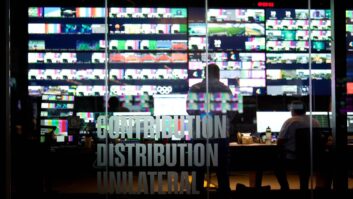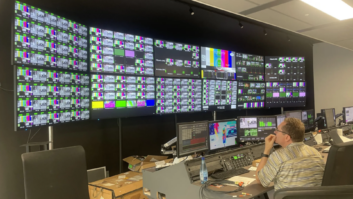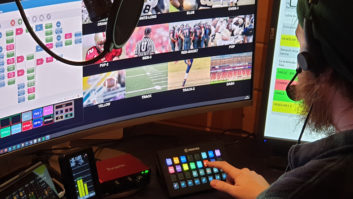The way viewers consume content is changing rapidly, and for an event that only happens every four years, it’s important for the Summer Games to stay on top of those changes.
TVBEurope asked the Video Labs team at InterDigital to gaze into their crystal ball and give us an idea of what the Games might look like in the future.
We haven’t seen much promotion of VR viewing experiences for Paris 2024. Why haven’t we seen more pick up and what are the limitations around VR experiences for the Olympics and wider sports viewing?
There are two major reasons why we’re not seeing as many VR and more broadly, extended reality (XR) experiences this year: technological limitations and a lack of understanding about the experience itself. Immersive experiences were toyed with at the Beijing and Tokyo Olympics, with some winter sports and table tennis events being broadcast in VR, but the reception from the public was mixed, with a low adoption rate and poor experience reviews.
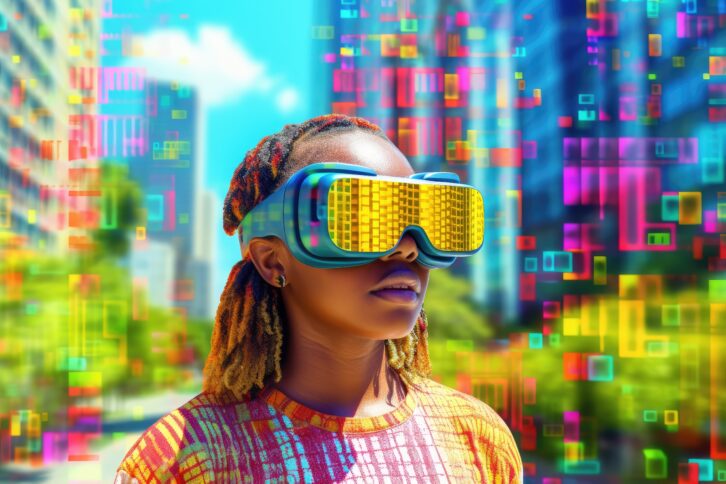
This is part of an ongoing trend. XR technology has so far not been able to deliver on expectations, leading to lacklustre adoption across both consumer and industry sectors. Developers need to get VR right before moving forward with events such as the Olympics.
From an experience perspective, it’s important to remember that major sporting events like the Olympics are naturally a social activity, with friends and colleagues discussing the goings-on at the games. In these terms, XR technology is a singular, personal experience, and closes you off to the rest of the world. VR formats for sports entertainment need to emulate the same social atmosphere, otherwise people are not going to adapt their viewing habits.
Are there any examples of how VR is currently being used in sports and how successful have they been?
VR’s involvement in sports is primarily used in training, rather than for entertainment purposes. Football clubs like Manchester United use the technology to train players in a safe environment, where they can work on accuracy and improve their overall game strategy in a virtual space.
In the US, coaches have begun to attach 360 cameras to players so they can rewatch the game from their own perspective, identifying areas for improvement. This has been successful because of the utilitarian applications. Rather than entertainment, VR technology is simply seen as a tool – an investment that helps athletes to improve their game.
There’s been talk that AR headsets could be used by production teams working on sports events, the idea being that the virtualised technology would take the place of an OB truck. Can you see that happening, and how far away do you think it is?
The OB van is a mobile production studio comprising a huge variety of technologies including camera ingest, media asset management, slow motion, video editing, media asset management and playout. Currently, there are remote solutions that enable remote content production using 4G/5G backpacks or fibre transmission. Assuming that we solve issues around latency, we might imagine that an on-site producer could use the AR headset as a user interface to pilot the remote production. Using this AR headset, the producer could preview and select cameras, graphics, slow motion and camera operators could see the result of the graphics on their camera feed.
The Apple Vision Pro seems to be gathering the public’s attention, do you think this will encourage more VR usage?
Apple’s Vision Pro is the latest addition in a long line of attempts encouraging wider adoption of VR headsets. While initial sales were strong, VR headsets have failed to establish themselves as that essential piece of at-home tech like smartphones or PCs. However, what makes Apple’s approach to VR so different is how it focuses on the user experience.
The headset is designed around user comfort, with a sleek design and refined focus on how users interact with the device – features competing headset models often lack. By centering on a high-quality customer experience, facilitated by 6G technology, VR headsets might finally be seen as a must-have piece of tech, rather than a luxury entertainment device.
New sport content for the Apple Vision Pro experience is starting to be produced, which will show the path towards more immersive experiences.
Volumetric streaming is expected to enhance the streaming of sport. Can you explain the importance of VVC in creating immersive experiences?
HD and Ultra HD immersive experiences require huge amounts of data, and as such require greater computing power than other viewing devices, and more powerful hardware on the device itself. VVC/H.266 is a standout codec that offers 50 per cent bit-rate reduction over its predecessor HEVC/H.265. This enables it to efficiently transmit ultra-high-definition content, from 4K and 8K video to high dynamic range (HDR) content and 360° and immersive video formats.
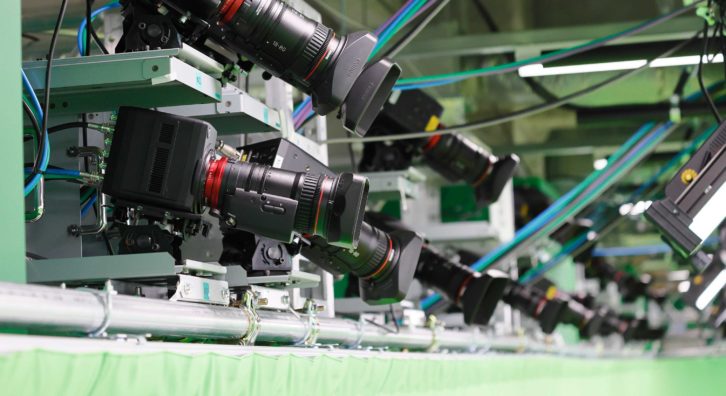
Greater efficiency in data transmission will provide content distributors more freedom as they develop higher quality immersive entertainment, as well as giving device manufacturers the confidence to create smaller, less invasive headsets, improving the overall user experience.
Looking to the future how will 6G enhance this viewing experience for the next Olympics and what can we expect from new advancements in both software and hardware i.e. haptics and headsets
More than just ‘faster 5G’, 6G is an opportunity to offer new experiences. 6G technology is expected to include more complex analytical insights, distributed control over connected objects, and an expanded range of digital-human interactions. Unlike 5G, it will manage the complex co-dependencies between chipsets, devices, applications, platforms, networks, and a range of interdependent technologies, such as haptics.
6G will encourage more XR development by facilitating more affordable and higher-quality experiences. As discussed, sporting events are ultimately social in nature, and 6G enabled XR experiences could mean tapping into virtual environments where spectators all over the world can interact with each other from the comfort of their living rooms.
What advancements are you most excited about in immersive entertainment in 2032 and beyond?
One exhilarating area will be the ability to share athletes’ live experiences. The advanced technology will enable the viewer to feel like one of the competitors, seeing the event from the athlete’s viewpoint, and feeling aligned with their movements, contributing to a fully immersive experience. In terms of viewing large sporting events outside of the home, this technology can elevate the already popular ‘fan zone’ viewing experience, where groups of people congregate around big screens, by making this more interactive.
In the future, we expect these fan zones will be equipped with screens and devices to support more personalised group experiences, delivering video, audio, and haptic feedback to the nearest fans and viewers. Increasing on-site content capture and user-generated content sharing will also amplify the remote viewing experience and the emotional engagement around the event. This style of immersive entertainment makes the content more engaging for viewers who can now enjoy the events anywhere they go.



